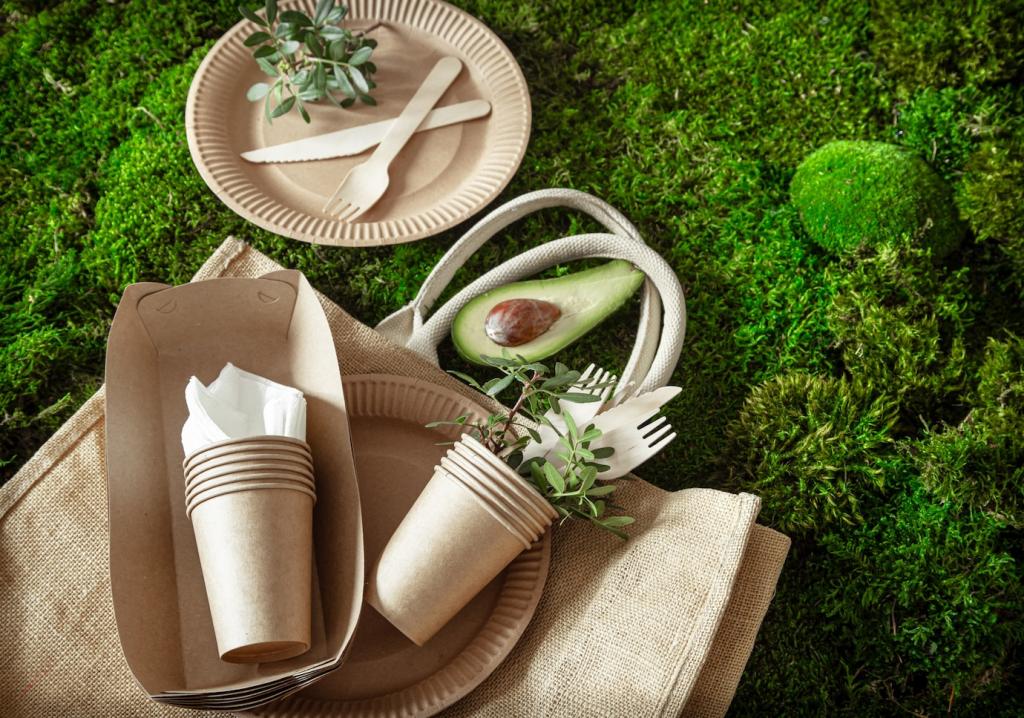Eco-Friendly Packaging Alternatives for Small Enterprises
Adopting sustainable practices is no longer reserved just for large corporations; small enterprises are increasingly expected to offer environmentally friendly solutions in their packaging. This comprehensive guide explores accessible, innovative, and cost-effective eco-friendly packaging alternatives that small businesses can adopt today. By making conscious choices, your enterprise can significantly reduce its environmental impact while resonating with a growing community of eco-aware consumers.

Understanding the Importance of Sustainable Packaging
The Environmental Impact of Conventional Packaging
Traditional packaging materials, such as single-use plastics and non-recyclable composites, contribute significantly to pollution and landfill waste. Each year, millions of tons of packaging end up in landfills, leading to increased greenhouse gas emissions and threatening local ecosystems. By shifting to eco-friendly alternatives, small businesses can play a vital role in mitigating these adverse effects, showcasing their commitment to sustainable practices and meeting the eco-expectations of modern consumers.

Biodegradable and Compostable Materials
Biodegradable packaging is crafted from materials that decompose through natural processes, typically via microbial activity, over a relatively short period. Compostable packaging goes a step further by breaking down into nutrient-rich compost under specific conditions. Materials such as PLA (polylactic acid), bagasse, and cornstarch-based plastics are common in this sector. For small businesses, adopting these alternatives ensures minimal environmental impact and offers customers peace of mind regarding end-of-life disposal.
Plant-based packaging harnesses renewable resources like corn, sugarcane, and bamboo to form sturdy and attractive packaging. Small enterprises have access to a growing range of plant-derived packaging products, from flexible films to rigid trays and bowls. While these solutions are increasingly cost-competitive, their compostability often depends on the availability of industrial composting facilities. Businesses should educate customers on proper disposal methods to ensure these materials fulfill their green promise.
Despite their benefits, biodegradable and compostable materials can pose challenges for small enterprises. The initial costs may be higher than conventional options, and the infrastructure for composting is not universally available. Additionally, not all biodegradable packaging breaks down efficiently in landfill conditions. To maximize impact, small brands must carefully select certified products, provide clear guidance to consumers, and remain transparent about the claims they make regarding packaging breakdown.
Advantages of Recycled Packaging Materials
Recycled packaging, made from post-consumer or post-industrial materials, significantly reduces demand for virgin resources and lowers a company’s carbon footprint. Paper, cardboard, and some plastics can be recycled multiple times, catering to various packaging needs. For small enterprises, using recycled materials can also be a compelling selling point, highlighting a commitment to responsible sourcing and production.
Strategies for Maximizing Recyclability
Designing packaging for recyclability requires careful selection of materials and thoughtful design. Monomaterial packaging—using a single type of material—simplifies recycling processes. Clear labeling and avoiding mixed materials or plastic coatings further boost recycling rates. Small enterprises can partner with local recycling initiatives and provide guidance to customers, enhancing the chance that packaging is actually recovered and reused.
Communicating Sustainability to Customers
It’s not enough to choose recyclable packaging; businesses must also educate consumers on how to dispose of it properly. Clear on-pack messaging and digital content outlining recycling protocols help prevent contamination and ensure that materials are sent to the right facilities. Transparency around recycling rates and successes further builds trust, positioning the enterprise as a proactive and responsible brand in the eyes of eco-conscious customers.
Innovative Reusable Packaging Models
Launching a Packaging Return Program
A packaging return program encourages customers to bring back used containers for cleaning and reuse. This model works well for businesses such as coffee shops, meal kit services, and local grocery stores. With proper incentives—like discounts or loyalty points—customers become active participants in a zero-waste initiative. Clearly defined processes for collection, sterilization, and redistribution are essential for success and food safety compliance.
Designing Durable, Attractive Reusable Containers
To incentivize reuse, packaging must be aesthetically appealing, practical, and built to last. Materials such as glass, stainless steel, and sturdy plastics offer longevity and can withstand multiple use cycles. Custom branding of containers not only minimizes waste but also serves as mobile advertising for the enterprise. Small businesses investing in high-quality reusable containers can convey both environmental values and a premium brand image.
Building Strong Customer Participation
Transitioning customers to a reusable model requires effective communication and engagement. Businesses need to educate clients on the benefits, outline return logistics, and gather feedback to improve the process. Social media campaigns and point-of-sale promotions can foster community enthusiasm and normalize sustainable behavior, turning environmentally friendly practices into expected standards within the customer base.


Eliminating Excess and Unnecessary Components
Many products are over-packaged, leading to unnecessary waste. By evaluating every element—such as inserts, wraps, and fillers—small enterprises can strip packaging down to only what’s essential for protection and presentation. This approach not only saves money but also allows brands to present themselves as modern, conscious, and efficient in their operations.

Customizing Fit for Products
Right-size packaging ensures that each item is encased in a container tailored to its dimensions. Custom-cut boxes and flexible mailers remove the need for wasteful void fill materials like foam or plastic peanuts. This reduces shipping costs, storage space requirements, and material use, while also providing customers with a streamlined, frustration-free unboxing experience.
Leveraging Local and Renewable Resources
Utilizing Regionally Sourced Materials
Small businesses can seek packaging suppliers who use materials grown or produced locally, such as recycled paper from nearby mills or agricultural by-products like wheat straw and mushroom mycelium. Local sourcing cuts down on transportation emissions and supports the regional economy, reinforcing both environmental and social sustainability.
Renewable Fibers and Fast-Growing Plants
Materials derived from fast-growing plants such as bamboo, hemp, or kenaf are ideal for sustainable packaging. These renewable fibers regenerate quickly, often requiring fewer inputs than traditional timber. For small enterprises, adopting such options can align brand identity with innovative agritech and promote adoption of underutilized but plentiful natural resources.
Collaborating with Local Artisans and Suppliers
Partnering with nearby artisans or packaging startups can result in unique, handcrafted packaging solutions. These collaborations infuse character, support employment in the community, and allow for more agile development of custom packaging solutions that stand out on shelves. Storytelling around these local partnerships further deepens brand authenticity and customer engagement.

Previous slide
Next slide
The first step is to thoroughly analyze current packaging, evaluating where waste occurs and identifying areas for improvement. This includes reviewing the entire supply chain and gathering feedback from both staff and customers. A comprehensive audit guides informed decisions, helping businesses prioritize the most impactful sustainability actions.
